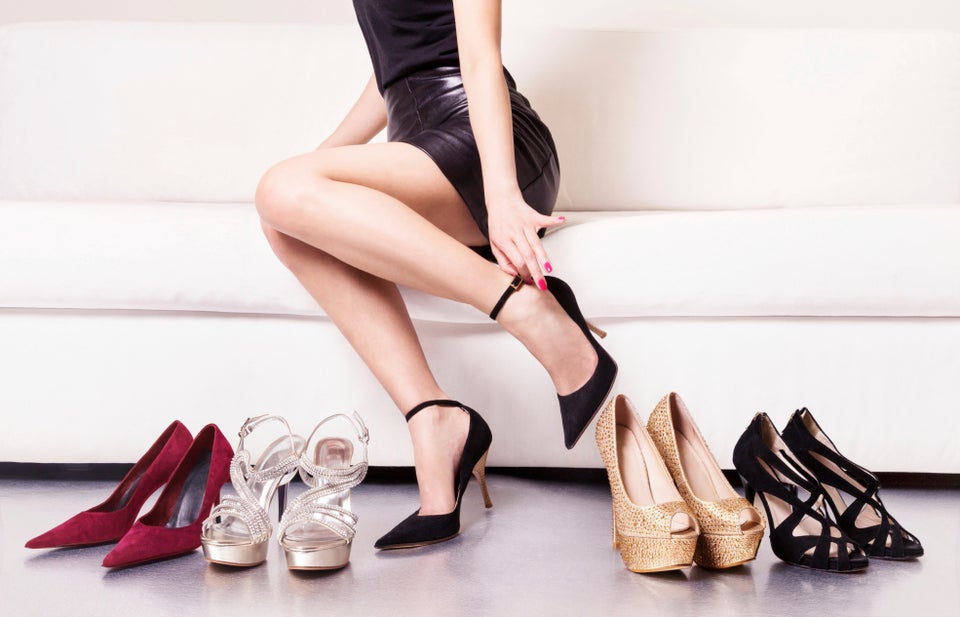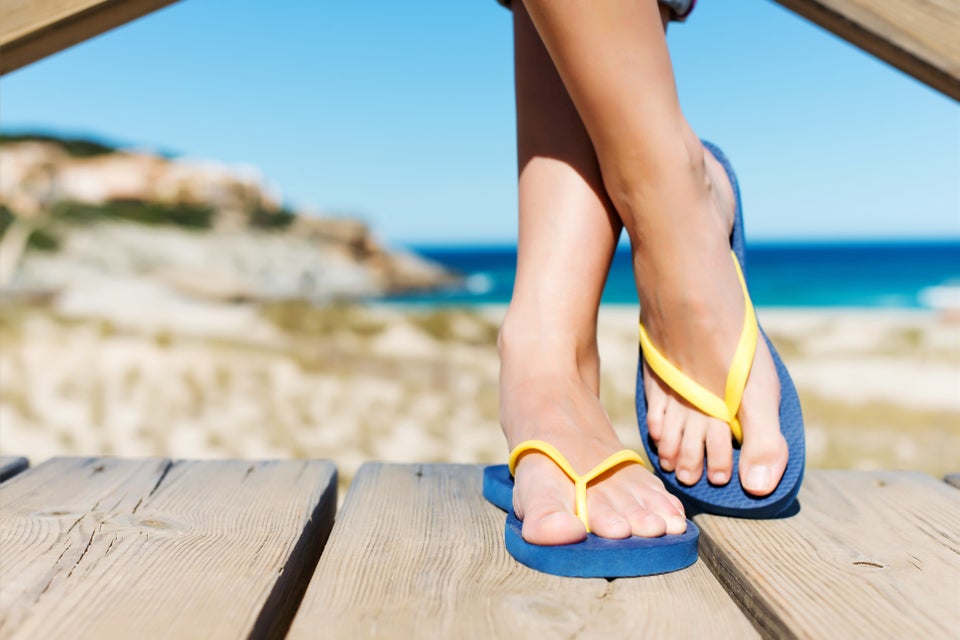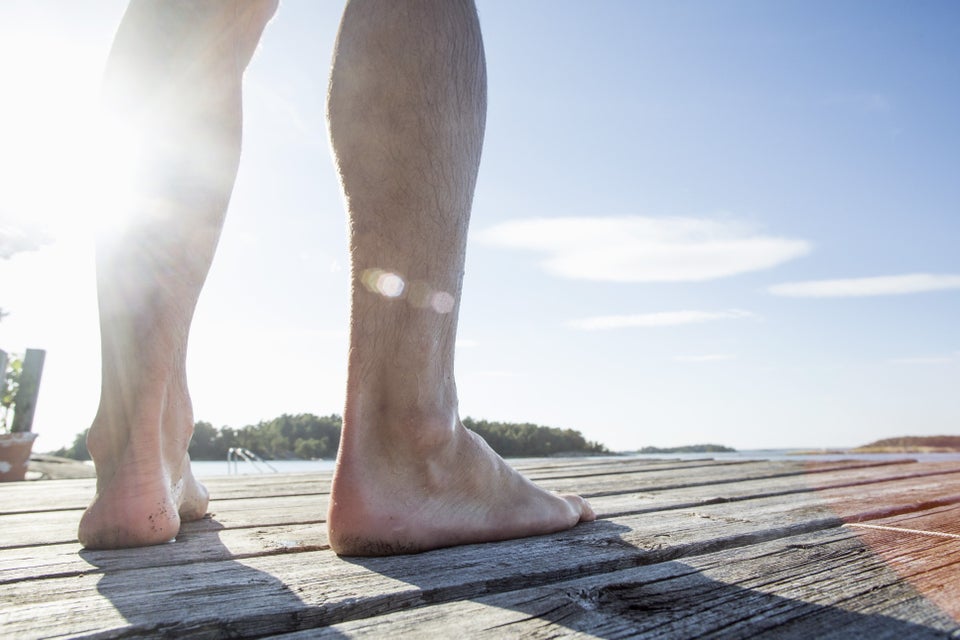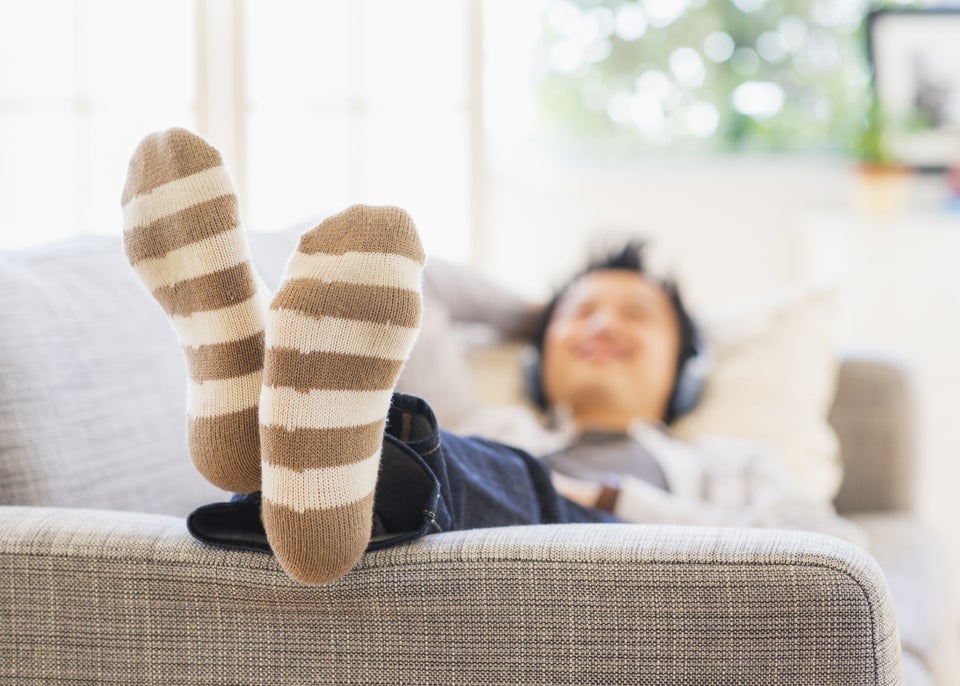
Got bunions? You can thank your grandparents or parents for those, according to a new study.
The research, published in the journal Arthritis Care & Research, shows that many common foot disorders, including hammer toe, claw toe and bunions, seem to be inherited, particularly among white men and women of European descent.
"These new findings highlight the importance of furthering our understanding of what causes greater susceptibility to these foot conditions, as knowing more about the pathway may ultimately lead to early prevention or early treatment," study researcher Dr. Marian Hannan, of Harvard Medical School and Hebrew SeniorLife, who is the editor in chief of the journal, said in a statement.
Bunions are quite prevalent, with recent studies showing that more than a third of older adults experience them. They occur when the joint of the big toe pushes away from the foot because the big toe is being pushed up against the rest of the toes, the Mayo Clinic explained. When this occurs, the bone that's pushed away from the foot forms a bump and can be painful, particularly when a person wears tightly fitting shoes.
In the new study, researchers looked at foot bunions (also called hallux valgus), lesser toe deformities and plantar soft tissue atrophy among 1,370 study participants with an average age of 66 who were part of the Framingham Foot Study. Researchers found that 31 percent of the participants had bunions, 30 percent had lesser toe deformities and 28 percent had plantar soft tissue atrophy.
They found bunions and lesser toe deformities seemed to be particularly heritable, though the plantar soft tissue atrophy didn't seem to be heritable.
A past study, in the journal Arthritis Care and Research, also showed that bunions become more common as people get older, and that women are more likely to have bunions than men.
Related
Before You Go

A new pair of sandals often comes at the steep price of painful blisters. The sores form from chafing that happens when a shoe rubs up against the skin until it balloons out, filling with fluid to cushion and protect the deeper layers of skin underneath, explains Jackie Sutera, a New York City podiatrist.
The first step for prevention, says Jane Andersen, a podiatrist in Chapel Hill, North Carolina and a spokesperson for the American Podiatric Medical Association, is to buy shoes that are comfortable when you buy them and don't need to be "broken in." Look for soft fabrics or leathers, and then take them for a test drive at home for an hour or so to make sure you stay pain-free before you wear them outside. You can also try lining any painful spots with moleskin to prevent the friction that ultimately causes blisters.
But sometimes, even seemingly comfy shoes can cause problems. "I've purchased perfectly good pairs of shoes that have given me blisters," Andersen says. If you do end up in pain, clean the blister with regular hand soap and try to leave it intact. But if the pain is unbearable, use an alcohol-sterilized needle to poke a tiny hole in the side of the blister and drain the fluid out, leaving all the skin intact. Then apply some antibiotic ointment and cover with a band-aid. (Don't try this at home if you're diabetic, though, Andersen cautions.)

Over-wearing this summertime staple can cause stress fractures, heel pain and tendonitis, and can exacerbate hammertoes. "These are not shoes that we should be wearing from 8 in the morning to 8 at night," Sutera says. "That's not really what these shoes are made for."
That said, they're hard to resist. And there are ways you can make flip flops a safer footwear choice.
"Not all flip flops are created equally," Sutera says. Look for a pair with a thicker sole with arch support -- and the more straps the better, as that can reduce the stress placed on the toes from gripping the flip flop so it doesn't fly off your foot. You shouldn't be able to bend the flip flop (or any shoe, for that matter), in half -- that's your first clue that it won't provide enough support. Reserve the ultra-thin ones for the locker room or pool.

Walking barefoot might be one of the great joys of summer, but it can also put you at an increased risk of contracting viruses like warts, fungus such as athlete's foot, or bacteria that can cause a skin infection, Andersen explains. These things tend to thrive in warm, moist environments, like a public pool.
Going shoeless also raises the risk of picking up foreign bodies, like stepping on glass or splinters.
Even walking around barefoot at home can be problematic, Andersen says, because the foot is left unsupported. If your house has a no-shoes rule, consider throwing on a pair of supportive slippers or indoor flip flops.

For some people, hot temps mean sweaty feet, and all that moisture can increase the risk picking up an infection. Andersen suggests wearing socks that wick excess moisture away, and changing out of damp socks as soon as possible. If you can't shower, at least rinse your feet off. "Keep a nice, cool environment for your feet," she says.
One natural trick? Brew regular black tea, let it cool and tuck your feet in for 30 minutes. Andersen says the tannins in the tea can decrease sweat production.

For many, polished toenails are a summertime necessity -- but serious health risks might be lurking in the pedicure chair.
"Pedicures can be a source for real problems," Andersen says. Everything from the tools to the relaxing whirlpool soak can transmit nail fungus, wart viruses and sometimes serious bacterial infections.
To stay safe, consider bringing your own tool set, Sutera says, especially the foot file, and clean your tools back home with a betadine solution. She also tells her patients to avoid the "Wednesday special," or a great deal that brings dozens more customers -- and germs -- through the salon. If possible, schedule your appointment at the beginning of the day, when technicians should be less tired and the tools and basins a little bit cleaner.
And don't shave or wax your legs for at least 24 hours before your appointment -- hair removal can cause microscopic cuts, increasing susceptibility to infection.

One study from the University of Miami and the "Today" show found that a single pair of flip flops can harbor a whopping 18,000 bacteria, including the dangerous superbug Staphylococcus aureus.
Walking the streets in open shoes can mean kicking up all sorts of debris, including human vomit, feces, bird droppings and a whole host of other unappetizing things, Phillip Tierno, director of clinical microbiology and immunology at the NYU Langone Medical Center, told The Huffington Post. Then you take your shoes off and touch, say, your face. "It's a repository for everything you brought in from the outside and [you] don't give it a second thought," he said.
A few simple precautions can keep you safe: Tierno recommends removing your shoes before entering the house and avoiding wall-to-wall carpeting when possible, as it can harbor germs. Slip on a pair of slippers at the end of the day and wash your hands thoroughly -- between 25 and 30 seconds -- after you remove your shoes.

Wearing open-backed shoes can spread the fat pad of the heel, causing the skin to crack, says Andersen. If you have any deep cracks where you can see dried blood, treat the heel with an antibiotic oil and cover with a band aid.
But if you just have run-of-the-mill dry summer heels, Sutera suggests treating them with an exfoliating moisturizer every day and run a pumice stone over them once or twice a week in the shower -- but only in one direction, as going back and forth can actually make the split skin worse.
Dry, cracked heels can also be a sign of a fungus, psoriasis, thyroid issues and diabetes, Sutera says. If you're concerned, visit a podiatrist or dermatologist to get the all clear.